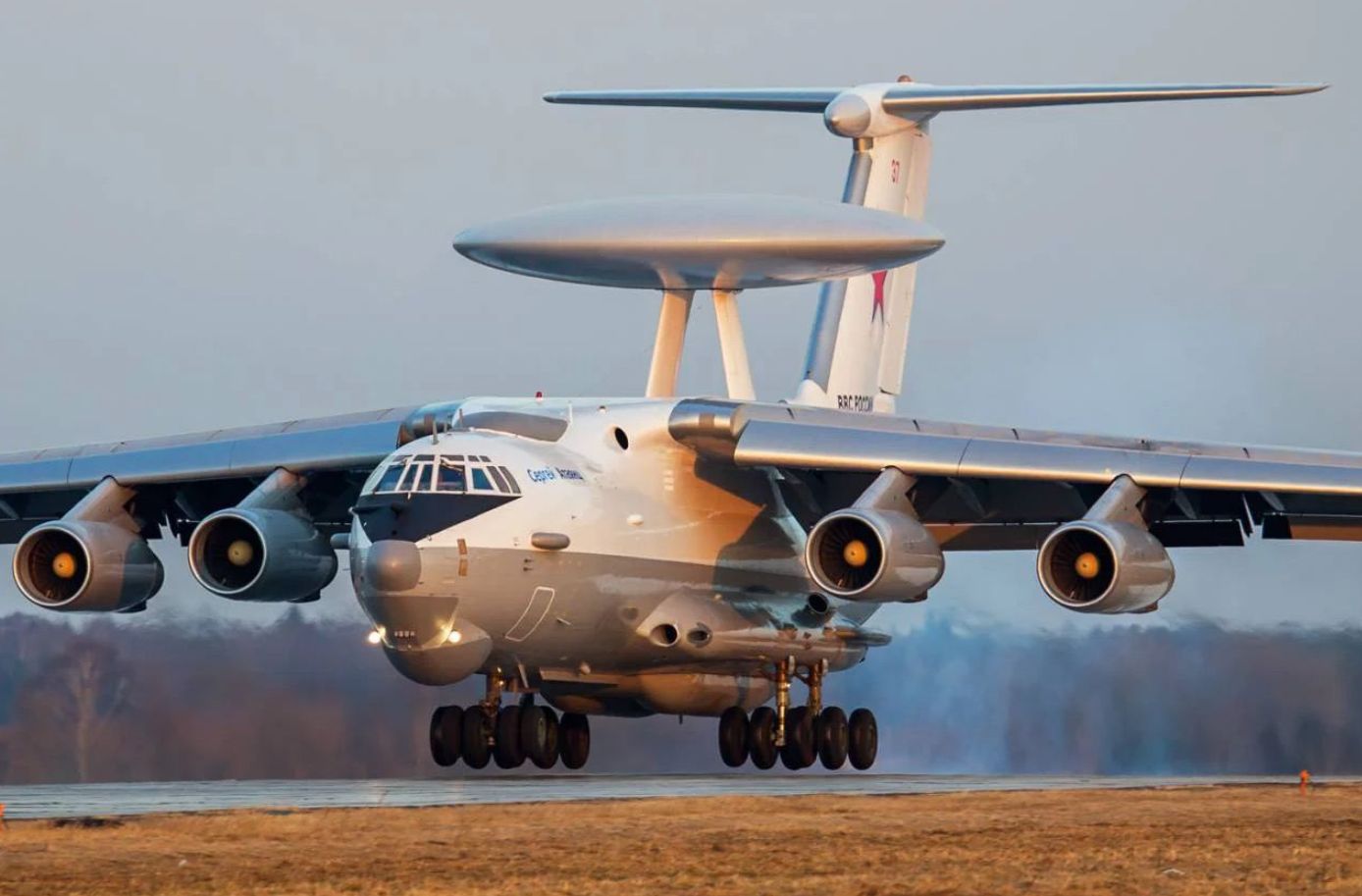Following the reported recent loss of its A-50 AWACS over the Sea of Azov, Russia appears to have deployed another A-50 Mainstay, this time conducting activities within Russia’s borders, according to the UK Ministry of Defense.
On January 14, reports surfaced on various Telegram channels asserting that the Ukrainian Air Force had successfully downed a Russian A-50 AWACS military aircraft.
Commenting on these claims, the UK Ministry of Defense, in a prior intelligence update, had alleged that a Russian A-50 likely suffered an explosion, leading to its subsequent crash into the Sea of Azov.
On Jan 19, in its latest intelligence update, the UK MoD mentioned that on January 17, the Russian Air Force initiated operations with another A-50 long-range radar detection aircraft.
However, this time, the activities are taking place over land within Russian territory, specifically near the Krasnodar region, situated farther eastwards from Ukraine.
The Ministry underscored the significance of the A-50 Mainstay in Russian operations over Ukraine, serving as a “key enabler” for airborne early warning of potential threats and providing command and control functionality.
This shift in operation is interpreted as a strategic move aimed at minimizing risk and preserving the remaining A-50 Mainstay, albeit at the cost of its overall effectiveness in Ukraine.
While Russia has not officially commented on the loss of the A-50, the latest deployment suggests a tacit acknowledgment of a successful targeting operation by the Ukrainians against a high-value air asset, according to the UK MoD.
“If the loss of the MAINSTAY was an accident, then such a decision is unlikely to have been required,” the update notes.
In addition to the reported downing of the A-50 Mainstay, Ukraine also asserted that they had successfully brought down an IL-22M airborne command plane on the same day.
However, photos surfaced on social media purportedly depicting the IL-22M aircraft grounded on an unidentified airfield’s tarmac.
The images revealed significant damage to the tail section, believed to have been caused by shrapnel from the strike.
Why Is The A-50 Crucial For Russia’s Operations In Ukraine?
The A-50, with its NATO reporting name “Mainstay,” is an airborne early warning and control (AEW&C) aircraft built on the Ilyushin Il-76 transport platform.
Comparable to the US and NATO E-3 Sentry, commonly known as AWACS (Airborne Warning and Command System), the A-50 plays a critical role in combat scenarios.
It uses 15 mission controllers to interpret radar returns and can direct up to ten fighter aircraft for air-to-air intercept or air-to-surface attack missions.
The A-50 can fly for four hours, covering a range of 1,000 kilometers (620 miles) from its base, with a maximum takeoff weight of 190 metric tons.
These AEW&C aircraft are indispensable for maintaining air superiority, acting as the eyes for all aircraft engaged in combat. In the context of the ongoing war in Ukraine, they play a crucial role in detecting air defense systems, guided missiles, and coordinating targets for Russian fighter jets.
The A-50 features a rotating radar dome, similar to the well-known US Boeing EA-3 Sentry AWACS. This allows it to detect and identify enemy aircraft at longer ranges than the radar sets of Russian fighters or SAM systems.

The A-50’s long-range radar search capability enables it to share a comprehensive situational “picture” with all airborne combat aircraft, facilitating direct communication and assisting fighter aircraft in intercepts and engagements.
The aircraft has been instrumental in coordinating Russian Aerospace Forces (VKS) fighter aircraft in battle.
Furthermore, it furnishes extensive ground targeting coordinates at long distances for Mikoyan MiG-31K aircraft, outfitted with the Kh-47M2 Kinzhal hypersonic missile.
Despite producing over 40 A-50s, fewer than 10 of these aircraft are currently operational within the Russian Air Force. Thus, the recent loss of this aircraft marks a major setback for the Russian Air Force, given that replacing these planes would present significant challenges, if not proving outright impossible.
Furthermore, the A-50 aircraft has also been utilized to share air data pictures from its SATCOM radar via datalink to Moscow’s advanced air defense system, the Almaz-Antei S-400 (SA-21).
This integration creates a more effective and extended air defense network, maximizing the capabilities of the VKS by utilizing the A-50U’s radar for target engagement with the S-400 system.
- Contact the author at ashishmichel(at)gmail.com
- Follow EurAsian Times on Google News




